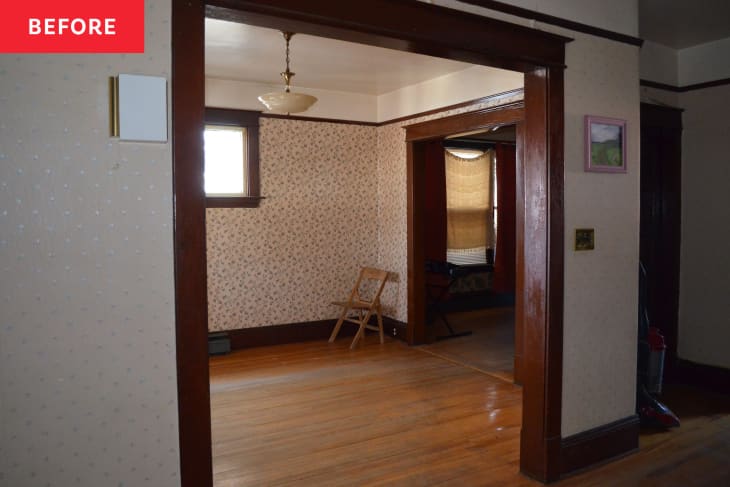

Old homes have tons of cool history, charm, and character, but they can also come with a lot of necessary remodels and repairs thanks to plenty of years of use.
That was certainly true of DIYer and real estate agent Melissa Doucet’s dining room in her 1922 home. “When we bought this century-old home, I don’t think anything had ever been done to it,” Melissa says of the dining room. “We wanted to keep the feeling of warmth and coziness this formal dining room gave but with new and safe materials.”
Melissa and her husband have a family of five and like to have the space to eat and talk all together at the end of the day, so the dining room was at the top of their list for repairs and renovations. The couple started by removing all the “very thick layers on layers of wallpaper” so that they could paint, but they quickly realized that the 100-year-old room’s plaster walls wouldn’t survive the process and would need to be gutted to the studs and rebuilt.
“We decided to take on these big renovations by ourselves,” Melissa says. “We got help when it came to plumbing and electricity, but we did all the drywall, finishes, and decorating.”
The three words Melissa used to guide her design process? Romantic, moody, and timeless. She wanted to keep the room’s vintage vibe but make it work for her family.
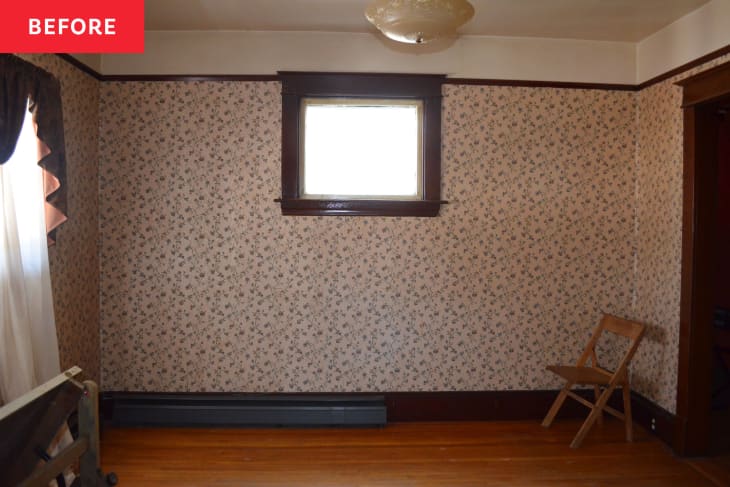
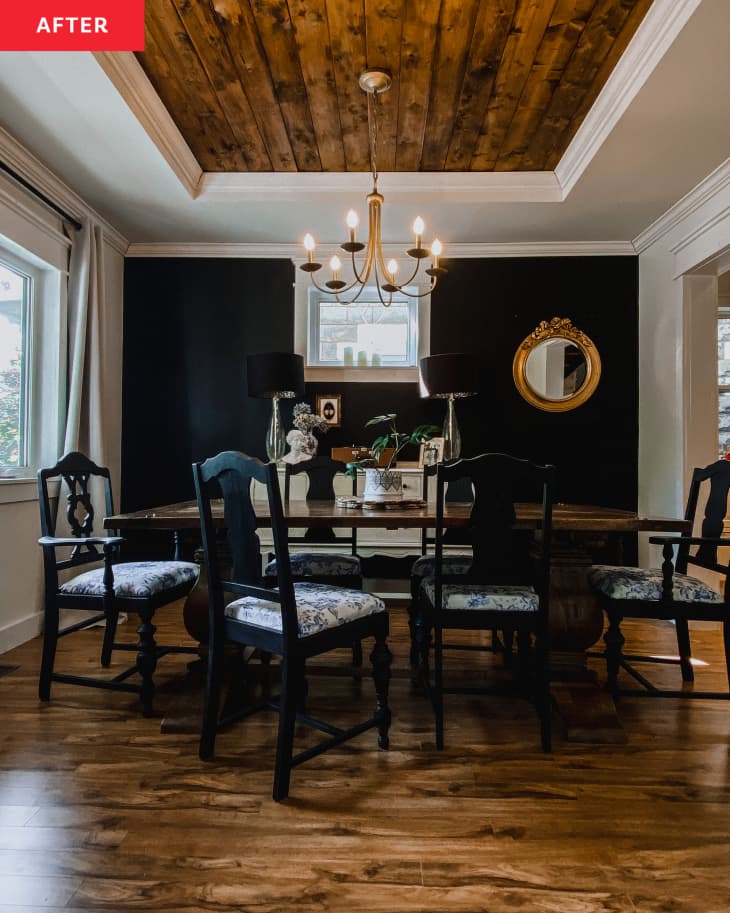
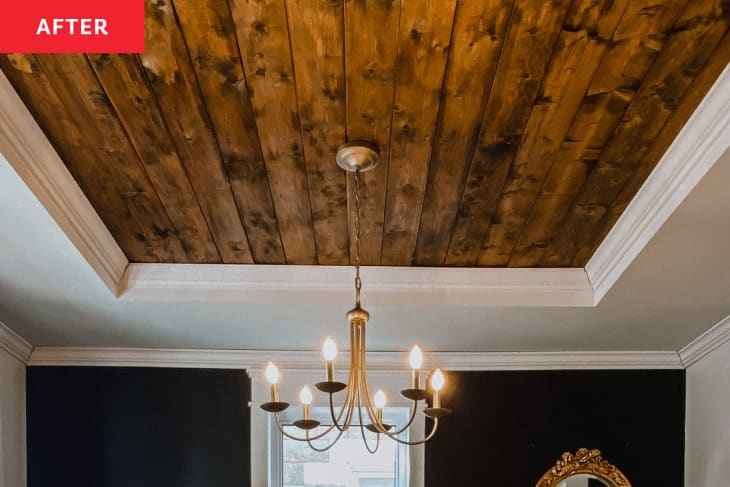
The rustic wood-paneled ceiling is a standout feature.
“We get a lot of compliments on our ceiling treatment, but that was an afterthought!” Melissa says. “We had to build a bulkhead to add the plumbing for our primary ensuite, and it was directly in the dining room. At first, when I learned that we needed to drop the ceiling in a few spots to add the plumbing for the ensuite, I was terrified and sad. I ADORED the tall ceilings.”
But because the ceilings in the dining room were fairly high, adding the bulkhead didn’t cramp the space and actually made for some cool architectural depth. “Adding the wood was a decision I made to add even more dimension,” she says. “What I thought was going to be an eyesore became my favorite feature!”
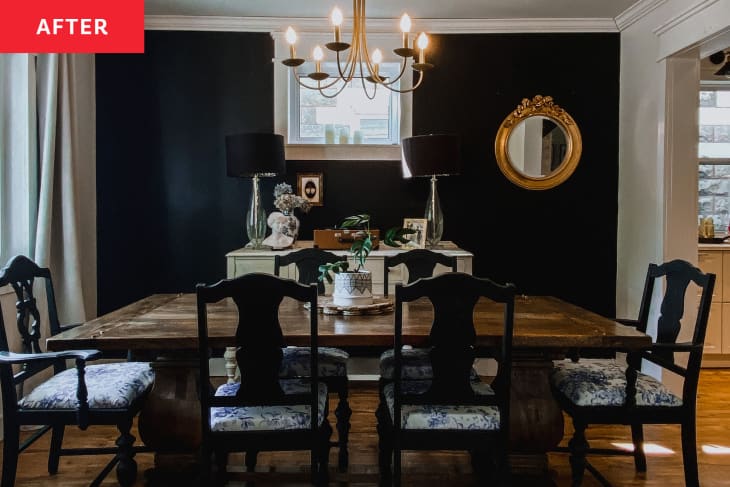
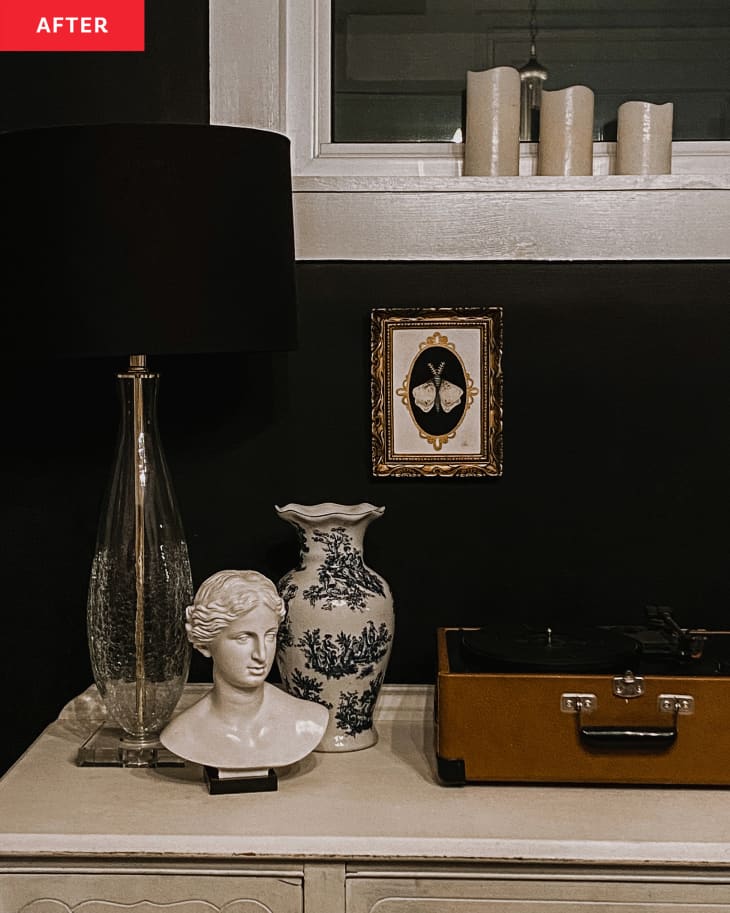
Dramatic black walls help the decor pop.
Another one of Melissa’s favorite parts of the space is the dark color mixed with the wood tones. “Black is not often a color seen in the dining room, but it fits perfectly with my vision, and I am glad I went for it.” She used Sherwin-Williams’ Caviar for the walls and enjoys that it’s bold while still being versatile in case she decides to switch up furniture in the future.
As for furnishings, Melissa’s table is from Bombay Company, and she already owned the set of once-brown wood chairs around it but decided to paint them black and reupholster them using a vintage-inspired fabric. The lamps atop the buffet are from Homesense, and the rest is antique or thrifted. (The cool moth artwork underneath the window frame is by Monica Chaimberlain of @monicachamberlainart.)
Melissa’s shopping advice for creating a lived-in vibe that feels at home in a vintage setting is to take your time. “We often tend to go to big box stores or shop quickly to finish faster,” she says. “Key pieces in a room should take time. Research, introspect and shop, shop, shop! Vintage stores are my go-to to find unique and nostalgic finds.”
If Melissa could change one thing about the project, she says would have spent less time trying to save the original moulding, which was beyond repair. “We spent a lot of time trying to find a solution for rebuilding the moulding while keeping the essence of the home in mind,” she explains. “Replicating was the easiest and most effective solution after learning we couldn’t keep the originals.” The new moulding around the doorway and windows copies the form exactly, but swaps the brown finish for white.
The biggest design lesson Melissa learned, thanks to the ceiling and moulding endeavors? “Sometimes you just need to know when to go with the flow!” she says. In the end, she was able to give this decades-old space a cozy and comfortable makeover that would give her family (and many others) a place to spend time together for years to come.